
WEED IT & REAP
A family legacy of sharing food
Charles G. “Chuck” Sattle: retired LOF millwright, gardening in Maumee
7/30/2014
Chuck Sattler’s tractor sits next to his garden in Maumee.
THE BLADE/ISAAC HALE
Buy This Image
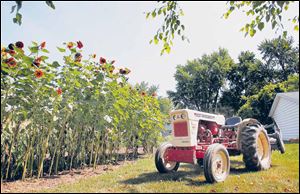
Chuck Sattler’s tractor sits next to his garden in Maumee.
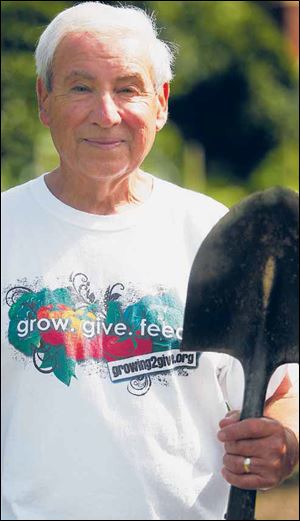
Charles G. âChuckâ Sattler, retired LOF millwright, gardening in Maumee.
Charles G. “Chuck” Sattler, retired LOF millwright, gardening in Maumee.
History and goats play into Chuck Sattler’s ambitious gardening endeavor.
He lives in the Beverly neighborhood of South Toledo but drives a few miles most days to work an acre on which two family homes are separated by vegetables and flowers (1204 and 1228 Michigan Ave. in Maumee).
PHOTO GALLERY: Chuck Sattler‘s Garden
It was here that his uncles operated the Boellner Bros. Goat Dairy Farm from 1933 to 1960, milk as many as 200 nannies — gentle, white Swiss saanen goats — twice a day. The land, at least 25 acres and believed to have been in the family since the 19th century, was part of Adams Township.
During the Depression, Chuck’s uncles Eddie and Tony Boellner, two of a family of 11 children that included Chuck’s mother, learned that some human babies are allergic to cow’s milk, and grownups who have ulcerated stomachs can’t digest it: both, however, can tolerate goat’s milk.
Each goat ate about two pounds of grain a day and in turn, produced about a quart of milk. They delivered with a wagon and eventually a truck.
“I’ve had comments from people who said that goat milk saved a lot of babies,” said Chuck, 79.
The brothers also planted apple trees and raised bees. In 1938, they built a huge barn and celebrated by inviting the public to a festive barn dance; hundreds of all ages showed up.
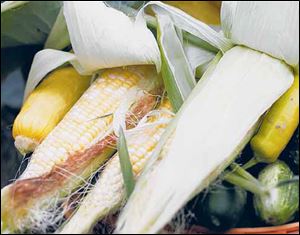
Bi-colored sweet corn from the garden.
Into the 1950s, Eddie and his wife, Eleanor, welcomed neighborhood children to the farm, the last of its kind in Maumee. The barn was packed with tons of hay and kids swung from the hay-pulling rope on high to land in soft piles below. Even their mothers, coming to fetch their youngsters for lunch, sometimes couldn’t resist a swing.
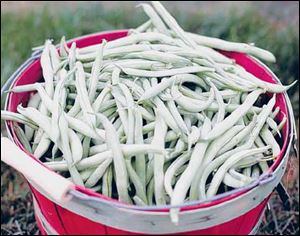
A bushel of green beans to be given away.
In 1960, Maumee annexed the land and the Boellners’ property taxes increased significantly. And, post-war growth was burgeoning. They sold the land to developers who built hundreds of small homes, and they ceased operations.
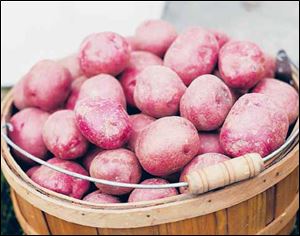
A bushel of Norland red skin potatoes.
Uncle Tony, who died in 1990, continued gardening the acre between the two homes, and Chuck took it over 12 years ago.
Garden specs: 250-feet frontage and 200-feet deep. It’s an acre plus a bit.
When did you start gardening? I was born and raised on a 75-acre farm on Fremont Pike just east of Lime City. We grew corn, wheat, oats, soybeans, and when we five boys were home, sugar beets and five acres of tomatoes that my father sold to Heinz. We didn’t play sports after school, we had to go home and work.
Being the youngest, I was the one to lend a hand in the garden. My mother had some health problems and appreciated the help. In 1943, I was about eight and my mother sent away to Henry Field’s [a seed catalog] for a conglomeration [variety] seed kit for children and set me loose in her vegetable garden. She also taught me to cook.
I graduated from Perrysburg High School in 1953 and went to work at LOF in Rossford.
What do you grow? Tomatoes (mountain pride, purple cherokee, early girl), sweet corn (Ambrosia bicolor) , Red Norland (early) potatoes, green and lima beans, zucchini and yellow squash, cucumbers, cooking and sweet [Alabama] onions, red beets, early and late cabbage, sweet and hot peppers, kohlrabi, garlic (regular and elephant, I plant it from Labor Day into mid-September and harvest about mid-June; it’s ready when the stalk is mostly brown but still has a little green on it), okra, lettuce, watermelon, pumpkins, butternut and acorn squash, Tennessee sweet potato squash, eggplant. Herbs include parsley, oregano, thyme, basil, and dill for the kosher dills I’ll make this year.
I’ve got sunflowers, cosmos, zinnias, gladiolus, cannas, four-o’clocks, Mexican sunflowers, and vining moonflowers that bloom at night and spill onto the sidewalk [their fragrance is wonderful].
Favorite plant: Mountain pride tomatoes; they taste good, are good for canning, and don’t split, followed by corn (Ambrosia bicolor) so sweet it doesn’t need butter or salt. My first planting of corn -- two rows at a time for pollination -- was April 17. Every week for the subsequent 11 weeks I plant two more rows and I’ll enjoy fresh corn ripening well into October.
Give us a tip: Tomatoes: hill up dirt around them, don’t overwater or over fertlize or you’ll have a lot of vine and not enough tomatoes. Mulch around them with rotted sugar-maple leaves (never use oak), cage or stake them. I give them a shot of Miracle-Gro when I plant them. In the fall, treat the soil with high-calcium lime that will prevent blossom-end rot (same holds true for sweet peppers). And rotate your crops to lessen the chance of disease.
Kohlrabi is good peeled, sliced very thin, and stored in a bowl of water in the fridge. I like them with salt and pepper.
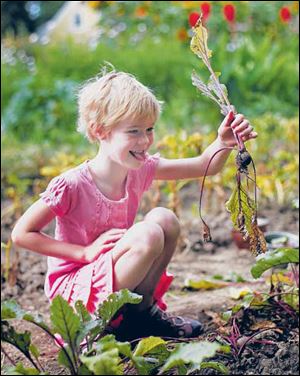
Neighbor Lucy McMaster, 6, pulls a Detroit dark red beet from Chuck Sattlerâs garden.
Hours spent gardening a week: 30 to 40.
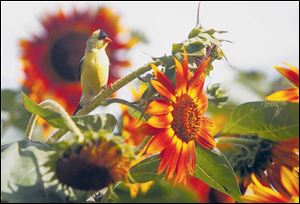
A goldfinch perches on a sunflower stalk in the garden.
Annual expense: $400 - $500. This year I started 22 flats of flowers and vegetables in Uncle Tony’s small greenhouse.
Challenges: Rabbits, leafhoppers on the beans, and squash bugs. This is the first year I’ve put a rabbit fence around the green beans and so far, I’ve harvested three overflowing five-gallon buckets. The fence is 18-inch high chicken wire, and around its perimeter I mounded up soil over the wire to discourage bunnies from crawling under.
I’m proud of: Sharing food. I give most of it to neighbors, friends, family, including 10 five-gallon buckets of tomatoes to my son and daughter-in-law from Chicago. They can tomatoes as do Nancy, my wife, and I. I will also be donating to Growing 2 Give Garden (a donation garden in Perrysburg, growing2give.org). I love seeing how people enjoy the flowers and the comments people make when walking by.
A humorous anecdote: Uncle Tony would get the water boiling before he picked his sweet corn so it would taste its absolute best. [The same is said of potatoes.]
We put it in cold water in a frying pan with a ½ inch of water and cover with a lid. We turn it on high and when it starts boiling, turn heat down to medium low for 10 minutes or less.
We freeze corn by steaming the cob, putting it in two to three subsequent cold baths, and draining it on towels. I cut off the corn with an angled corn cutter and put it in freezer bags. When you take it out of the freezer, you only have to heat it for a few minutes..
Contact Tahree Lane at: tlane@theblade.com or 419-724-6075.